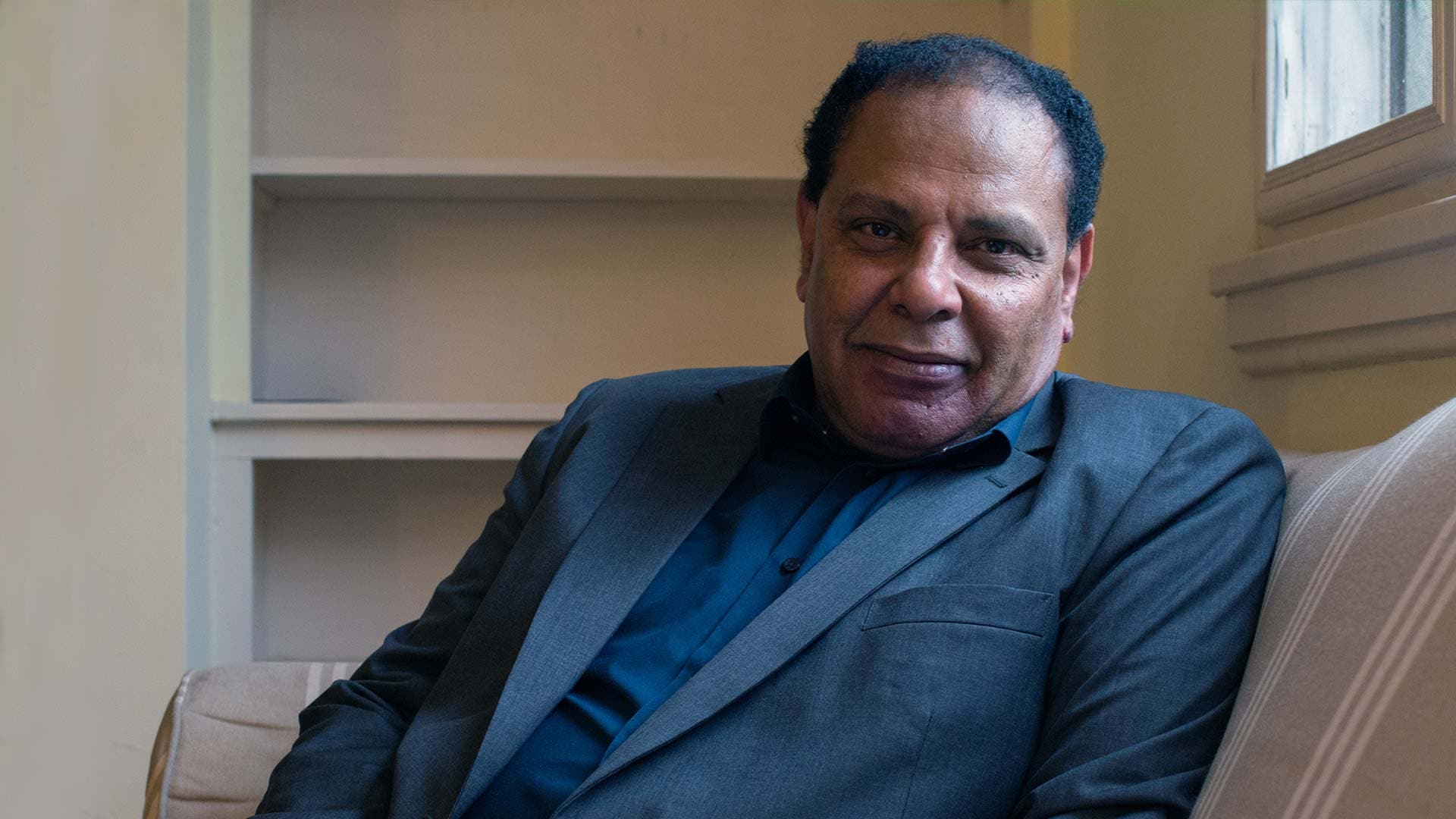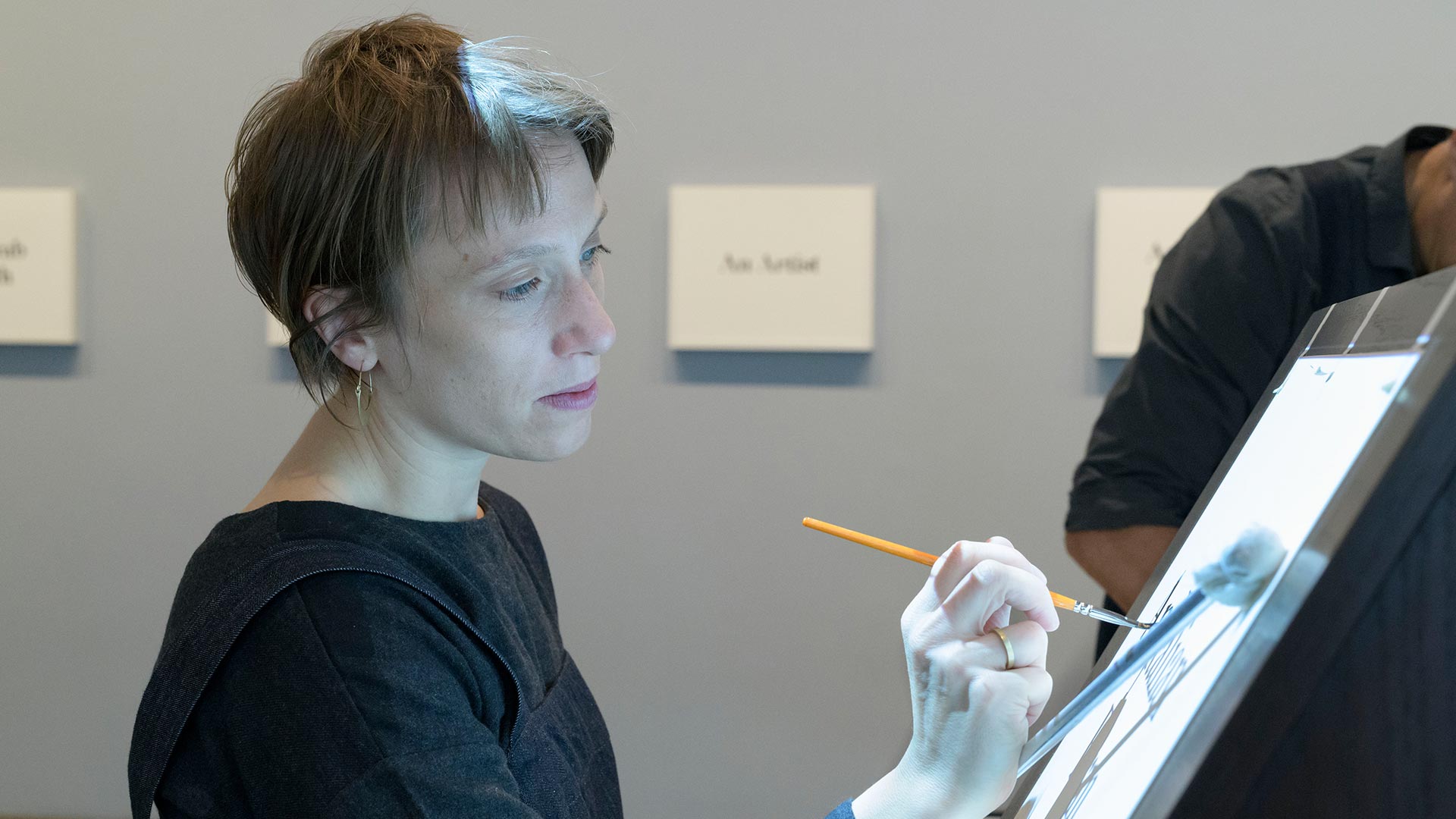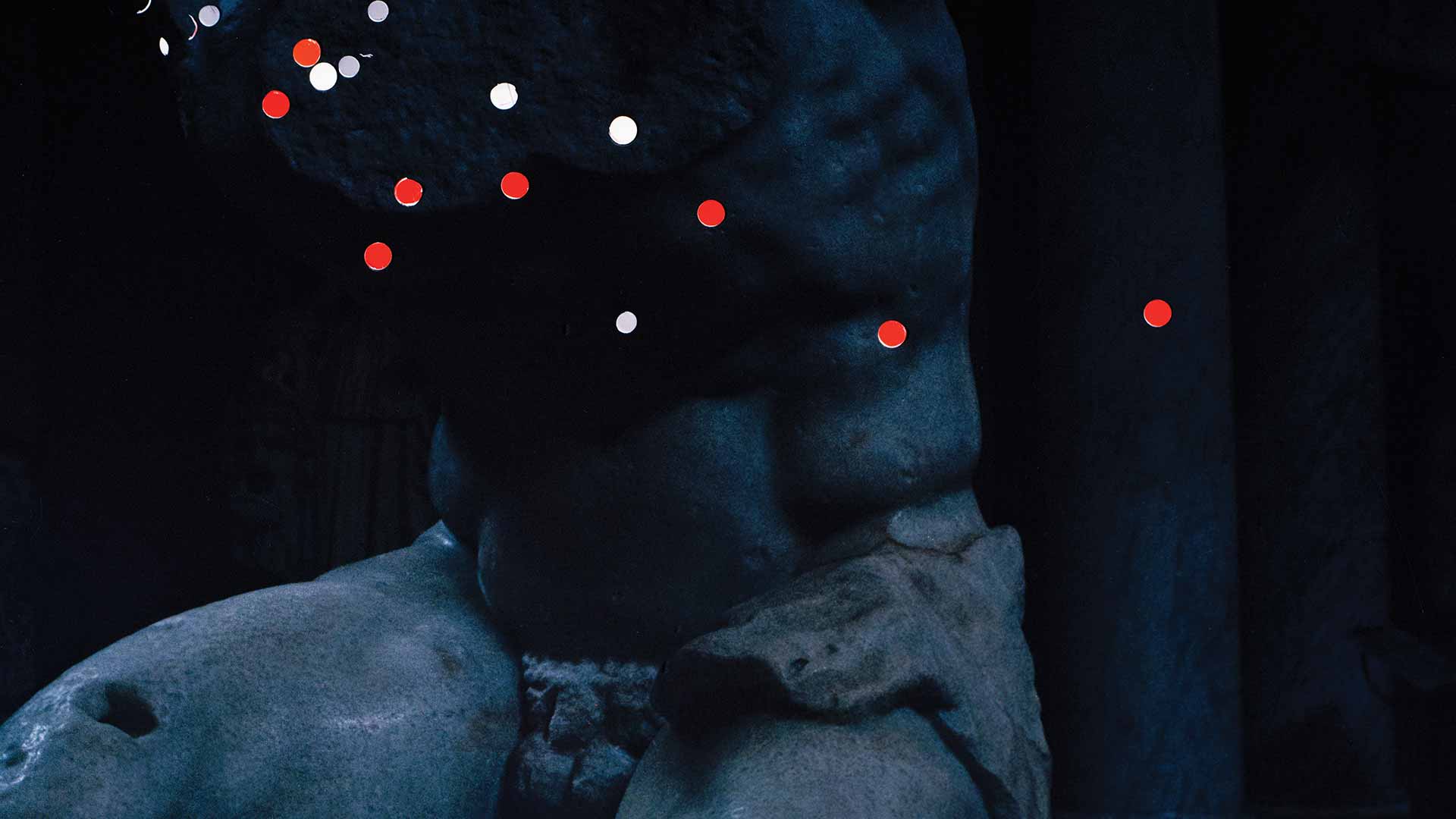In May 2015, a thirty-four-year-old woman from Damascus, along with her husband and their four children, fleeing Syria’s civil war and bound for Europe, left Libya by boat. When the overcrowded vessel capsized, she and her two-year-old daughter drowned. The girl’s body was lost, but the mother’s corpse was retrieved, numbered, and buried in Sicily. The father and his three surviving children sought asylum in Germany, where he was approached by a member of the Berlin-based Center for Political Beauty (Zentrum für Politische Schönheit) with an offer to exhume, transport, and properly rebury his wife nearby. He agreed, and in just one day the artists’ group was able to raise the 34,000 euros needed to cover the expenses. The funeral, officiated by the local imam, took place in the Muslim section of the forest cemetery in Berlin Gatow and attracted a small crowd of respectful strangers dressed in black as well as around two hundred journalists and photographers. (Because the family’s asylum case is ongoing, their names have been withheld from the press coverage, and they were not permitted to travel to the funeral from their place of residence in Germany.) Cameras clicked frenetically when two coffins—one of them empty—were lowered into the ground. Beside the graves were forty chairs, reserved for Angela Merkel, interior minister Thomas de Maizière, and other high-ranking politicians, though none had responded to the invitation to attend. The C.P.B. had also written a speech for Merkel, which remained unread: with it, the chancellor would have announced her resignation, acknowledging her failure to prevent the thousands of deaths that had occurred in the Mediterranean over the previous three years. The Syrian woman had found an idyllic final resting place, Philipp Ruch, the founder of the decade-old art collective said, but her death “will fuel our political unrest.” A few weeks later, Ruch and his team of more than two dozen permanent collaborators, aided by about a hundred volunteers, staged a march under the half-threatening, half-spooky banner ᴛʜᴇ ᴅᴇᴀᴅ ᴀʀᴇ ᴄᴏᴍɪɴɢ. The cortege began its walk at the eastern end of Unter den Linden, passed the Reichstag, and concluded outside Merkel’s office. After a well-mannered vigil closely watched by the police, many of the somber demonstrators suddenly stormed over the fence surrounding the Chancellery and began frantically digging into the grass on the other side with their bare hands—their shovels had been confiscated early on. The police just watched, and soon a hundred small grave mounds, a flower placed on each one, marred the pristine lawn. “The European Union needs more graves for its deadly politics, and these graves won’t remain silent,” Ruch explained. The C.P.B.’s action created “a brief moment of beauty,” he said, before the fence would be repaired and the grass reseeded. * * * The Center for Political Beauty has its offices on the ground floor of the Maxim Gorki Theater, a fifteen-minute walk down Unter den Linden from the Reichstag. Philipp Ruch arrived there late on a November evening last fall. He looked rather handsome, if slightly disheveled with his thinning hair and a casual shirt—not his typical business attire, which seems intended to dispel any notions of bohemianism. During his frequent talk show appearances, he cuts an impressive figure: soft-spoken and eloquent, unfailingly polite—and radical. As he talked, he swiveled around in his chair, reflecting back on ten years of “insane stress and the hardest work imaginable” for the C.P.B. The group, under the leadership of Ruch and his two closest collaborators, Stefan Pelzer and Cesy Leonard, has staged thirteen major actions since it was founded. Ruch’s idea of beauty is inseparable from morality—and from grandeur. He cited the moment in December 1970 when the West German chancellor, Willy Brandt, spontaneously sank to his knees on a visit to the memorial for the victims of the Warsaw Ghetto. “Beauty must hurt,” Ruch said. His rhetoric shies away from neither pathos nor militancy: he calls his organization an “attack force” and its members “Sturmtruppen,” a word whose fascist echoes have long since faded, he said—“the younger people think of Star Wars.” Fighting words are essential to his concept of an “aggressive humanism,” a high-hearted and noble-minded stance with a sharply subversive edge. “There is not a single humanistically inclined politician who would call him- or herself a humanist instead of an animal rights activist, an environmentalist, a conservationist,” Ruch said. “So what happened to humanism?” The son of psychologists who because of his father’s Swiss passport were able to leave the G.D.R. shortly before the Berlin Wall fell, Ruch spent his formative years in Switzerland. He moved back to Germany in the late Nineties to study political science at Humboldt University and later worked in the History of Emotions research center at the Max Planck Institute. His aim now, he said, is to “open German hearts with a crowbar.” Just as Christo and Jeanne-Claude orchestrated their mammoth installations as media spectacles and considered such attention a part of their art, Ruch’s press strategy is integral to the C.P.B.’s “escalations.” While research for future actions is conducted in utter secrecy over many months, the time and place of each event is shared with news organizations weeks ahead of time, and reporters often show up en masse. “I have seen editors in chief cry,” Ruch said proudly. The activists do their work with photogenically soot-streaked faces—a kind of war paint, but also, according to Ruch, a gesture of mourning for the world’s cultures lost to war. Collisions with good taste are part of the show. For too long, according to Ruch, the far right has hijacked the political shock potential traditionally owned by the left. Even sympathetic members of the press have accused Ruch of “political pornography,” “megalomania,” “kitschy” stunts, “blatant shit,” and acting as if “morbidly intoxicated.” Against these charges, Ruch simply points to the size of the catastrophe he’s calling attention to. Ruch is highly critical of organizations such as Amnesty International, which is staffed, he said, with “born compromisers who lack passion and vision and keep their sponsors in mind. We want a better human rights organization, one that will abolish the veto against accusations of genocide at the Security Council, for example.” Like Plato, he views politics as the highest form of art; he calls the C.P.B.’s activities a “parallel German foreign policy.” Among the earliest C.P.B. interventions—staged in 2010—was the “Tower of Shame,” built from 16,744 shoes collected in Bosnia, meant to represent the 8,372 Muslim men and adolescents who were murdered in Srebrenica in 1995 while neither the German military nor the U.N. forces intervened. The C.P.B.’s breakthrough action, however, was staged in 2012, when the group printed large posters promising a “bounty” of 25,000 euros for “leads of any kind” that would assist in “the conviction of the owners of the arms manufacturer Krauss-Maffei Wegmann”—the company had been in the news because of a major weapons deal between Germany and Saudi Arabia. Names and biographies of the company’s thirty-eight owners were revealed on “wanted” posters put up all over Berlin. Among them were a prominent philanthropist and other members of the liberal bourgeoisie, including Burkhart von Braunbehrens, a well-known artist and former leader of the ’68 student revolt—he owned a 90 million euro share. The embarrassed artist pleaded with the German president to cancel the deal with Saudi Arabia. But he also obtained an injunction against the C.P.B. and forced all thirty-seven articles about Krauss-Maffei Wegmann to be taken down from the group’s website. The C.P.B. didn’t have the money to fight back in court, but the scandal put it on the national map. * * * The last thing Ruch wants is for his escalations to end up in the arts sections of newspapers and magazines—he goes for the front page. At the same time, the group’s most risky maneuvers are possible only because of the special status of artistic freedom under German law, which sanctions what would otherwise be illegal actions. The power this gives the C.P.B. was apparent in “Action #7”: on November 1, 2014—eight days before the twenty-fifth anniversary of the fall of the Berlin Wall—a maintenance crew in yellow vests appeared at a memorial for citizens of the former G.D.R. who were shot by the East German police while trying to scale the wall and make it to the West. The workers, under the supervision of a supposed conservator (played by Ruch), expertly unscrewed fourteen wooden crosses from the memorial, put them into a cart, and quickly vanished. In place of the crosses they left note cards with the names of Arab and African refugees who died attempting to conquer the walls of Fortress Europe. The theft of the crosses was discovered shortly afterward—but only because of a press release issued by the Center for Political Beauty, announcing the crosses’ “escape” to the borders of Bulgaria, Greece, and the Spanish enclave of Melilla in Morocco, where they would be united with refugees who had been trapped in those places, some of them for years. The impetus for the action, the group stated, was the European Union’s announcement that, because of financial considerations, it would cease funding Mare Nostrum, the rescue program for refugees in the Mediterranean; the previous week, a thousand people had died trying to cross the sea. Police investigated the stunt as an act of aggravated theft, but Alexandra Hildebrandt, the director of the Checkpoint Charlie Museum, which is in charge of the crosses, not only dropped the charges against the thieves, she even expressed her regrets for not having paid more attention to the refugee crisis. In the end, a federal court decided that because the crosses were eventually returned, their removal was permissible as a manifestation of artistic freedom. A significant segment of early twenty-first-century art is marked by the so-called social turn, which could also be seen as a return to the highly politicized art practices of the Sixties. The Guerrilla Art Action Group in New York, founded in 1969, published a manifesto titled “Toward a New Humanism” that anticipated many of the C.P.B.’s concepts, and their creative guerrilla actions against social injustices provided a road map. Ruch said his greatest role model, though, was a man who didn’t call himself an artist: Varian Fry, the American journalist who ran the Emergency Rescue Committee in Marseille under the Vichy government, helping hundreds of philosophers, artists, film directors, and writers—including Hannah Arendt, Marcel Duchamp, Max Ophüls, and Marc Chagall—to escape to the United States. “Since the Sixties, artists have challenged the status quo by having sex onstage, covering themselves with blood, selling their own shit, and so forth,” said Ruch. “The only true radical thing left is saving lives.” Ruch has lauded the Red Army Faction’s 1968 attack on two German department stores—they detonated two firebombs inside the stores, carefully timed to explode without endangering people—as an exemplary public relations action: a highly divisive statement, considering the R.A.F.’s later fatal attacks. In 2017, the C.P.B. called for the assassination of Turkish president Recep Tayyip Erdoğan, in a pamphlet distributed by a remotely controlled printer in Istanbul’s Taksim Square. “I’m not a pacifist,” Ruch told me, claiming that German pacifism has cost thousands of lives in the Middle East. He points out that the failed assassination attempt on Hitler led by Claus von Stauffenberg is seen as a heroic act today—and so are all the other tyrannicides of the past. He sees the increasing power of ultraright movements in Europe and elsewhere as an emergency demanding an immediate response: “In 1945, the Allies were faced with an ideologically contaminated society—today, denazification is called for again.” Shortly after the action in Istanbul, the C.P.B. began a campaign targeting Björn Höcke, a leader of the far-right Alternative für Deutschland party. Höcke made a name for himself by vehemently protesting the installation of Peter Eisenman’s Holocaust memorial in Berlin: “We Germans are the only people in the world who have planted a monument of shame into the heart of our capital.” C.P.B. members began secretly filming Höcke at home, followed him on his vacations, and went through his garbage—where they discovered a neo-Nazi publication he not only subscribed to but also wrote for, under a pseudonym. They later rented a house across the street from Höcke’s property in the picturesque village of Bornhagen and surreptitiously built a replica of Eisenman’s memorial in the garden. Bornhagen’s furious inhabitants tried to chase away the troublemakers, calling them—in good old Nazi tradition—“Bolshevik scum.” Höcke attempted to get the group evicted, but they had an open-ended lease. Death threats were made against C.P.B. members, Ruch was called a terrorist, and one of his comrades was accused of being a murderer, which led to a visit from the police. Ruch was euphoric. At the end of our conversation in November, Ruch told me he found it “uncomfortable” that there were no martyrs in his country. If he should become one, he told me, he would like for his corpse to be thrown into the garden of the politician responsible for his death.
The Center for Political Beauty
Claudia Steinberg is a contributor to numerous German and U.S. publications and the author, with the photographer Bärbel Miebach, of The Art of Living (Monacelli Press).


